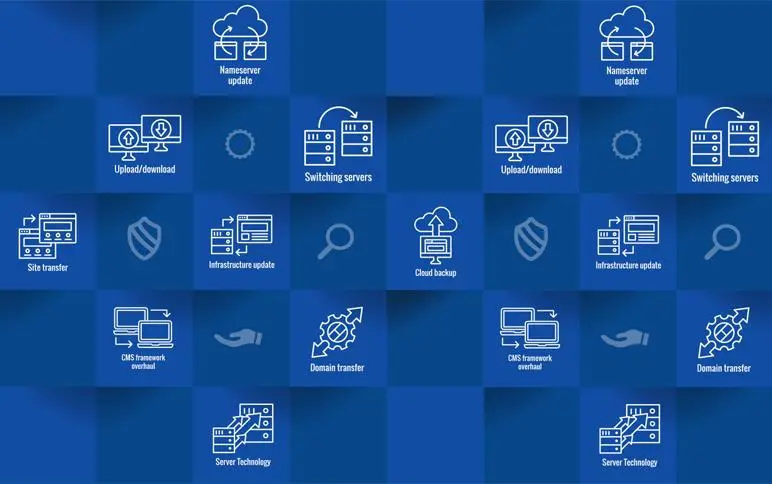Ecommerce: On Premise vs. Saas
The benefits of SaaS solutions outweigh those of traditional on-prem. They’re automatically updated, more secure, easily configured, and readily integrated with back-office systems.

Mike Bernard

As fate would have it, it just so happened that this faucet was directly over our server room. I’m no systems admin, but I know enough about technology to know that water pouring on top of expensive computer components is not a good thing – not a good thing at all!
Fortunately, we have a killer IT team and they were all over this. After a lot of effort, most of our systems were restored in less than 24 hours.
Outside of the normal disruption that something like this causes, it got me thinking about broader business implications. We were lucky that all this water only impacted our internal systems. If I hadn’t written this blog, our customers would never even hear about this happening. We’re a SaaS (Software as a Service) company so all our production applications are hosted on AWS. Water pouring through the ceiling onto our gear only impacts internal operations.
But, what if our business was different? What would the impact look like if we weren’t a SaaS company?
When we talk to potential customers, we help unpack the benefits of SaaS vs. an on-premise solution. Usually people like the idea of working with a SaaS vendor. But, on occasion, we encounter organizations who would prefer to run their ecommerce platform on-prem.
In some cases, an on-prem solution makes sense. For example, if you operate within a highly regulated industry, having all your systems on-prem might be a necessity. We work with a number of medical device manufacturers that have access to information that’s covered by HIPAA laws. For these companies, an on-premise ecommerce solution makes a lot of sense (and we’re more than happy to help them out by providing an on-prem option).
But in most cases, the benefits of SaaS far outweigh those of traditional on-prem solutions. Here’s why we believe that to be true:
- No need to worry about a vital business driver like ecommerce being down for a week because your servers get drenched when someone leaves the water on all night. I know it’s rare, but as we found out, crazy accidents happen. You don’t want your revenue to dry up while computers dry out.
- You get all the latest features and updates without having to do system upgrades. In our case, over 50% of Episerver’s product roadmap comes directly from our customers. That means we build the tools that daily business users want and ask for. If you go with an on-premise solution you could be missing out on a lot of functionality that could be used immediately to improve your business.
- Speaking of system upgrades….no more migrating to the newest versions. No more hot fixes. No more packets to install. No more 3 a.m. cut-overs or costly downtime. Managing an on-premise application takes tremendous IT resources. Better to spend that time and energy in other areas that actually impact revenue for the business.
- Believe it or not, SaaS applications are more secure than on-premise solutions. How so? We have a team whose sole job is maintaining security for our customers. For on-premise organizations, security is a top concern, but it’s not the only concern. With numerous competing priorities, it’s impossible to dedicate all your time to securing your applications. Also, we use a single-tenant application and database model that ensures your data is walled off and looked after.
- You know you’re always on the latest version. In addition to features and functions being available, bugs and security holes don’t take years to get resolved due to having to wait for a version migration.
- Also, through an API-first approach, your integration with back office systems is never in doubt with SaaS. Moving versions with on-premise solutions puts your integrations into jeopardy, potentially causing lengthy (and costly) delays.
- Data is always backed up and available should an issue occur. That means your IT team doesn’t have to worry about generating and storing backups. This reduces risk (when those backup jobs fail to run for two months and no one notices until you actually need them) and reduces data storage costs.
- Fully functional mobile apps can be created and administered through the commerce engine. A SaaS approach allows fully functioning mobile apps to always be in sync with the database layer so the user maintains a seamless experience across all devices and can do his or her job whether behind a desk or in the field.
These are just a few reasons why we think a true SaaS application is a better route than on-premise…especially for mid-market manufacturers and wholesalers/distributors. The IT lift involved in building, deploying and maintaining an on-premise ecommerce solution is far too heavy for most organizations.
Speaking of SaaS, there’s one final distinction I want to point out. There’s a lot of confusing noise in the marketplace and I hope this helps provide clarity. There is a difference between an ecommerce platform that’s truly Saas versus one that is PaaS (Platform as a Service).
Without getting into a lot of technical nuance (though we are happy to do that if you’re into that sort of thing), here’s where the difference lies:
With SaaS, all of the functionality is built within the application. With PaaS, some of the core nuggets are built within the application but much of the functionality must be custom built. While custom built seems attractive in the short run, it creates real headaches in the long term. Since the functionality you need to complete daily tasks must be hand coded for each customer, there is no parity across the code base and making changes in the future becomes very expensive.
Our approach is to build the rich B2B functionality within the application so you don’t have to custom code everything. Afterall, native capabilities give you a strong foundation to rest your ecommerce strategy on. We like to keep the business user top of mind. And as a business user, you want to be able to configure not code.
In the future, we’ll write a blog on the differences between SaaS and PaaS and why this matters. But for now, when searching for a new vendor, make sure they’re a true SaaS platform and not just PaaS masquerading as something it’s not. You’ll want a provider that’s forward-thinking, not just reactionary.
Although generally speaking, being able to react is still crucial in a SaaS company. Cheers to our IT department for working through the wet mess and getting us back up and running in no time!
